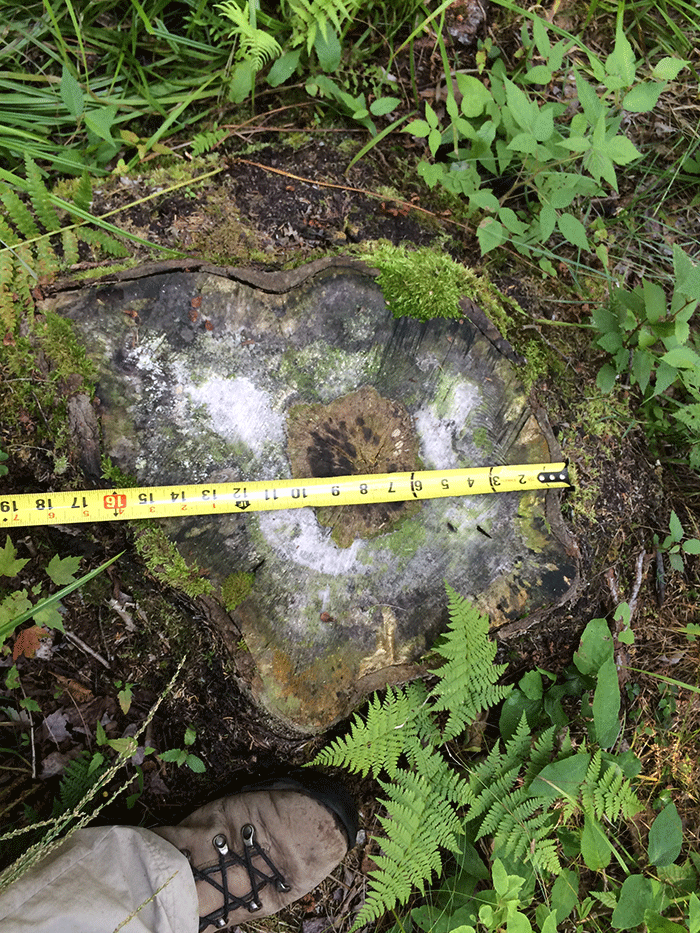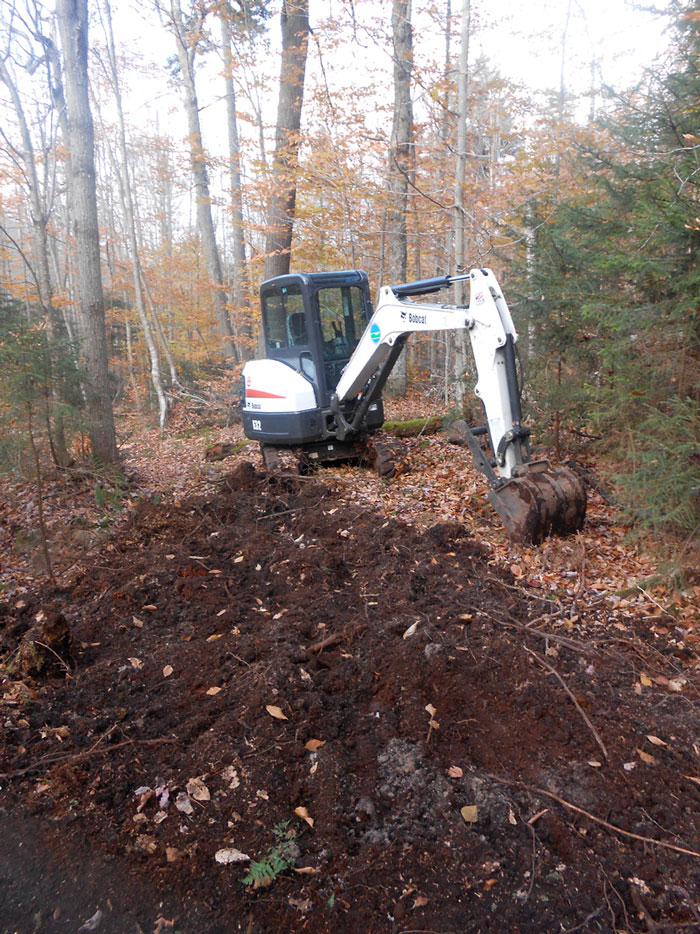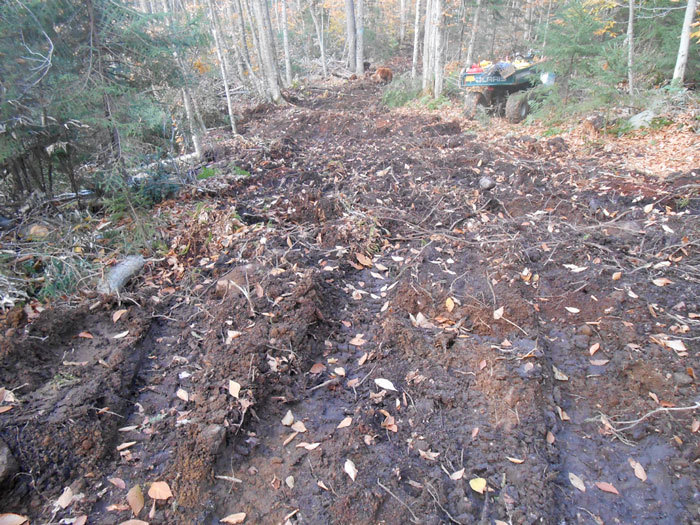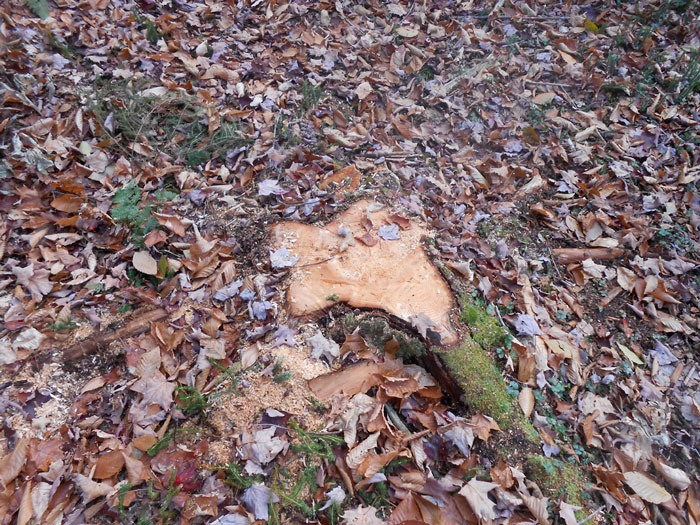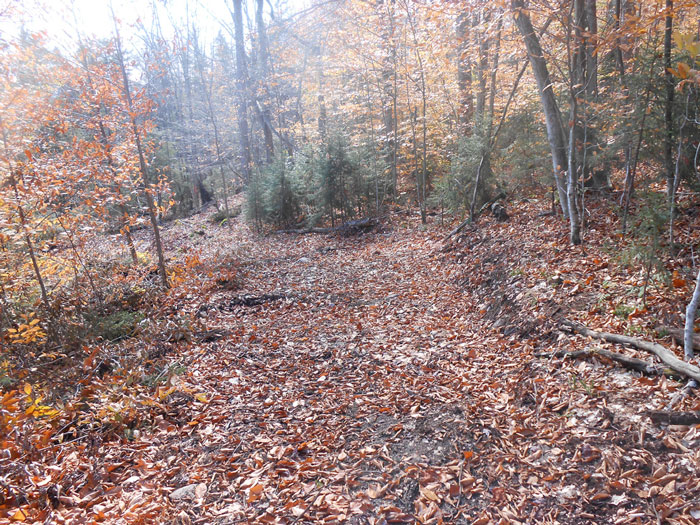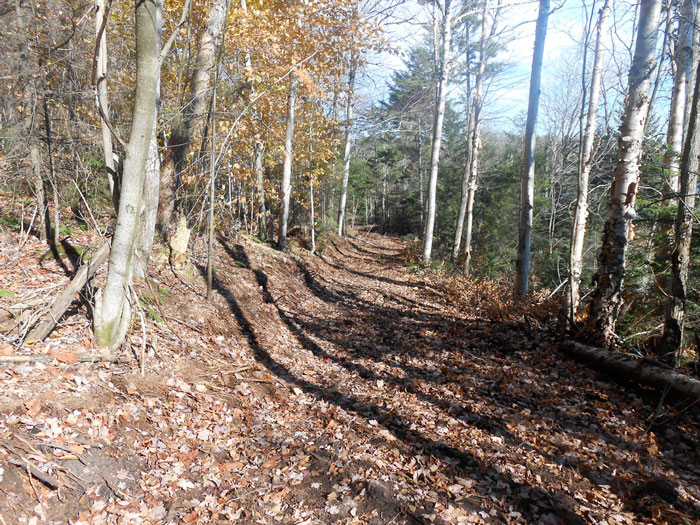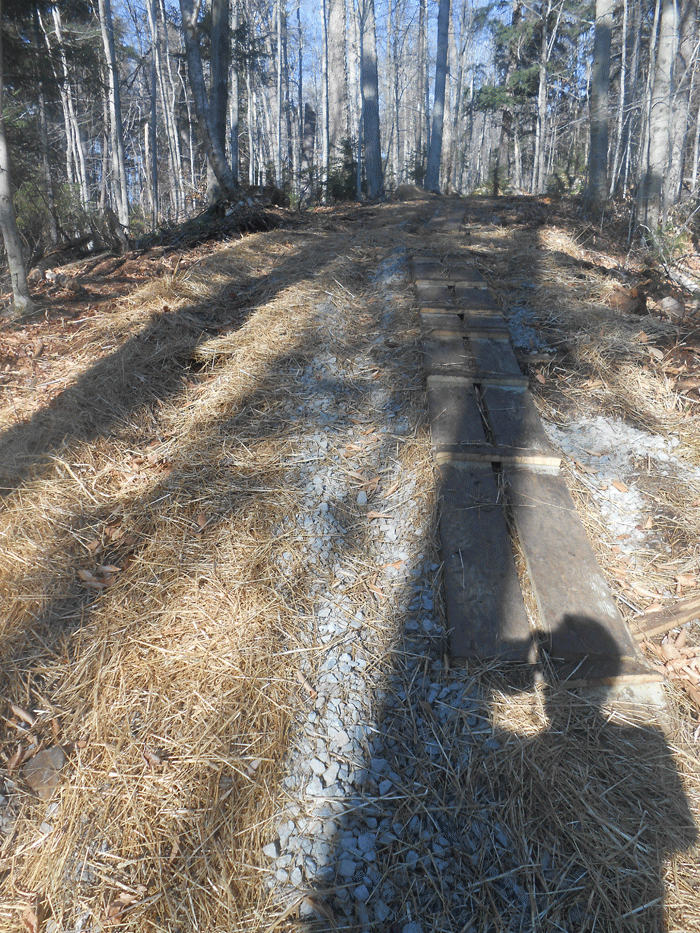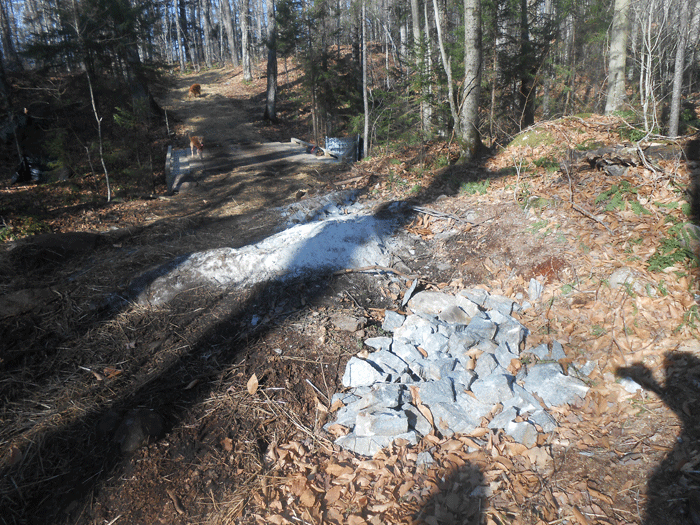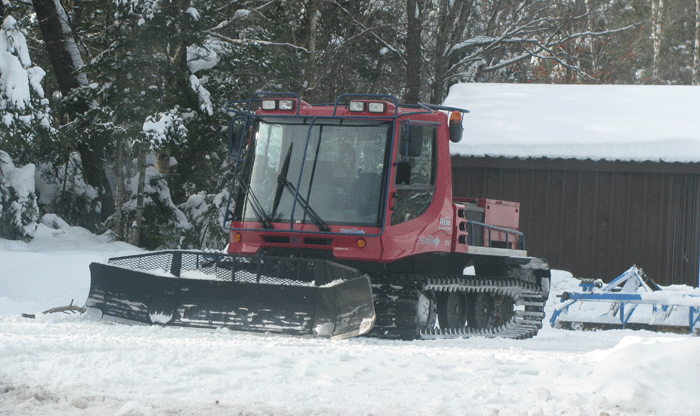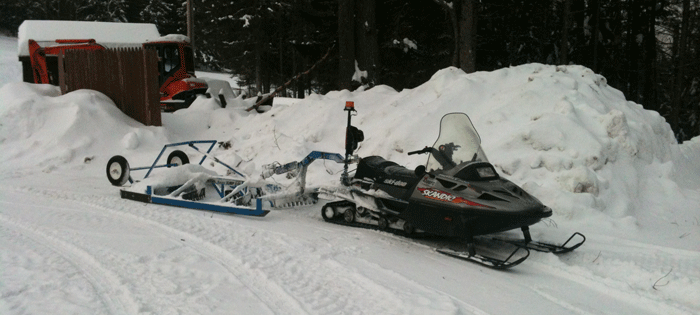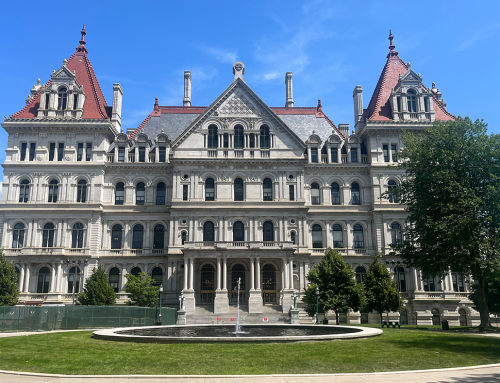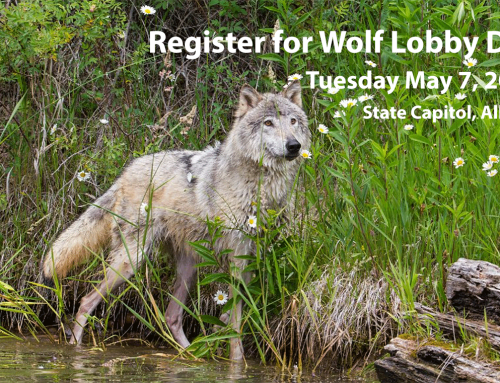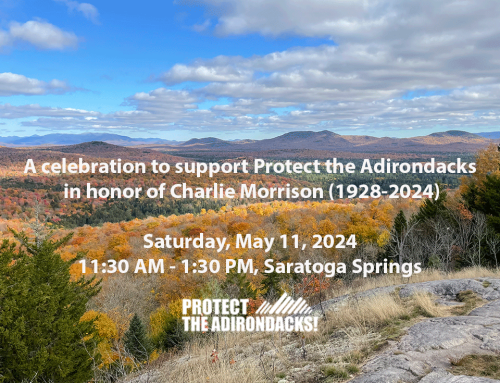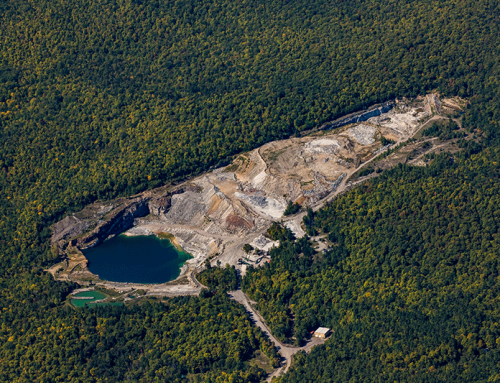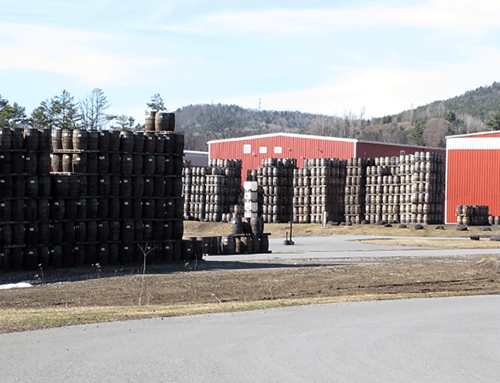Protect the Adirondacks has started a new lawsuit against the NYS Department of Environmental Conservation (DEC) and Adirondack Park Agency (APA) to challenge recent snowmobile policy and trail construction practices in the Adirondack Forest Preserve. The lawsuit contains two parts: 1) allegations that the construction by the DEC of new 9-12-foot-wide “class II community connector” snowmobile trails violates the “Forever Wild” clause of the NYS Constitution; and 2) allegations that the DEC and APA violated the Adirondack Park State Land Master Plan (SLMP) and DEC regulations by authorizing the mechanical grooming of snowmobile trails with large tracked groomers.
PROTECT is seeking approval for the constitutional lawsuit from the Appellate Division, 3rd Department, in Albany, a procedure required for all lawsuits alleging a violation of Article 14 of the NYS Constitution. If the motion is granted, the lawsuit will be filed in State Supreme Court in Albany.
See the new lawsuit papers linked at the end of this post. See PROTECT press release.
IMPORTANT NOTE: READERS SHOULD NOTE THAT THIS LAWSUIT IS NOT SEEKING TO PROHIBIT ALL SNOWMOBILE USE IN THE FOREST PRESERVE. IT IS NOT SEEKING TO PROHIBIT ALL USE OF MOTOR VEHICLES IN THE FOREST PRESERVE. THIS LAWSUIT CONCERNS ONLY WHAT WE BELIEVE ARE THE ILLEGAL WAYS THE STATE HAS CHOSEN TO BUILD AND GROOM SNOWMOBILE TRAILS, TYPIFIED BY A NEW TYPE OF “CLASS II COMMUNITY CONNECTOR” TRAILS.
The lawsuit is carefully and narrowly focused on a violation of the State Constitution and two violations of state law and rules
PROTECT has long been opposed to the direction of the state’s snowmobiling program in the Forest Preserve. We have raised these objections consistently through the years. Both of PROTECT’s predecessor organizations participated in Governor George Pataki’s Snowmobile Working Group for several years, as did PROTECT’s current Executive Director, and throughout the process opposed the main focus of the state’s Snowmobile Plan for the Adirondack Park “ creation of a network of wide class II community connector snowmobile trails. The largest of this new type of snowmobile trail is the Seventh Lake Mountain Trail, built in 2012 and still in construction in 2013. We also opposed the APA’s adoption of its Management Guidance: Snowmobile Trail Siting, Construction and Maintenance on Forest Preserve Lands in the Adirondack Park.
During the development of the Snowmobile Plan, PROTECT’s predecessor groups argued that the new class II community connector trails violated the SLMP and were unlikely to be built in a way that did not violate the state Constitution.
PROTECT objects to what we believe is the illegal way that the state has designed and built class II community connector snowmobile trails and to the illegal way that these trails are groomed.
See PROTECT’s field observations on the construction of the new Seventh Lake Mountain Trail in the Moose River Plains. See PROTECT’s policy discussion about the state’s violations of law in the design and construction of this trail. See a PROTECT letter to the APA and DEC on this issue. See PROTECT’s opposition to the approval of the Management Guidance by the APA.
The constitutional lawsuit alleges that the design and construction of class II community connector snowmobile trails violated the state Constitution
PROTECT’s principal objection has been that the 9-12-foot wide class II community connector snowmobile trails are basically roads. These “trails” require a high level of construction that changes the terrain and wild character of the Forest Preserve where they are built. These trails are graded, flattened, and widened with heavy machinery, rocks are removed, trees are cut down, all understory vegetation is removed, oversized bridges are built, gravel is used on the bed of the trail, bench cuts are regularly made into side slopes, and bedrock is removed. This is all work that goes well beyond what is required for the construction of a foot trail or even a lesser snowmobile trail.
In its opposition to the DEC’s Snowmobile Plan, which proposed widespread construction of this type of class II community connector snowmobile trail, PROTECT’s predecessors argued that these trails violated the SLMP in many areas and could not be built without violating the state Constitution’s “Forever Wild” clause, which prohibits tree removal and requires that the Forest Preserve “be forever kept as wild forest lands.”
Article 14, Section 1, of the NYS Constitution reads, in pertinent part:
“The lands of the state, now owned and hereafter acquired, Constituting the forest preserve as now fixed by law, shall be forever kept as wild forest lands. They shall not be leased, sold or exchanged, or be taken by any corporation, public or private, nor shall the timber thereon be sold, removed or destroyed.”
PROTECT’s lawsuit alleges that DEC’s cutting of more than 2,200 trees over the 11.9 miles of the new class II community connector snowmobile trail, the Seventh Lake Mountain Trail, in the Moose River Plains Wild Forest area of the Forest Preserve, violated the state Constitution’s prohibition on tree cutting. Whereas prior case law has found some limited tree cutting on the Forest Preserve in furtherance of state management to be acceptable, PROTECT believes that the amount of tree cutting for the new community connector snowmobile trail exceeds permissible limits. PROTECT is not saying the state can never chop down a tree, but the work done on this new trail goes far beyond what is legal and acceptable.
In addition to the new class II community connector snowmobile trail built in the Moose River Plains, DEC has already approved work plans for similar trails in the Wilmington and Jessup River Wild Forest areas, which will also require cutting hundreds of trees. PROTECT estimates that the entire class II community connector snowmobile trail system planned by DEC in the Snowmobile Plan and approved UMPs will result in cutting over 8,000 trees and clearcutting almost 50 acres of the Forest Preserve.
In 1930, the New York Court of Appeals struck down the state’s plans to build the “bobsleigh run” for the 1932 Winter Olympics on Forest Preserve land because doing so would have required destroying over 2,500 trees and clearing 4.5 acres of Forest Preserve. DEC’s plans for the new class II community connector snowmobile trails go far beyond that, making these plans unconstitutional.
PROTECT’s predecessor, The Association for the Protection of the Adirondacks, was the plaintiff in that 1930 case; Association for the Protection of the Adirondacks vs. MacDonald. Similar issues were addressed in the case of Balsam Lake Anglers Club vs. DEC in the 1990s. The Association case is often referred to as setting the standard for showing that an action violates Article 14, whereas the Balsam Lake case is cited as a case where the state’s action was permissible.
In addition to the illegal tree cutting, PROTECT alleges that the Forever Wild clause of the Constitution was violated by the widening, clearing, grading, flattening, clearcutting the understory, rock removal, destruction of bedrock, bench cutting, use of gravel on the trail bed, and over-sized bridge building involved in creating the new class II community connector snowmobile trail in the Moose River Plains. We believe that the excessive alterations to the Forest Preserve in what is basically a 12-acre clearcut that snakes through the Forest Preserve, violates the constitutional mandate that these lands are to “be forever kept as wild forest lands.”
The series of pictures below shows construction scenes from the Seventh Lake Mountain Trail (a class II community connector snowmobile trail in the Moose River Plains) where Forest Preserve lands were not “forever kept as wild forest lands” and substantially altered.
The Article 78 claims in the lawsuit challenge illegal grooming activities that violate the State Land Master Plan and DEC regulations by allowing large motor vehicle tracked groomers on designated “trails”
In addition to violations of the state Constitution, PROTECT believes that the way the state has chosen to groom the new class II community connector snowmobile trails violates the SLMP and DEC regulations. This is important because the way that the state plans to groom class II community connector snowmobile trails dictated the way they were designed.
PROTECT’s lawsuit includes claims under Article 78 of the Civil Practice Law and Rules (CPLR) that the DEC and APA violated the SLMP and DEC regulations when they authorized the use of large, multi-ton, tracked groomers on designated “trails” on the Forest Preserve. PROTECT believes that state law provides that the only motor vehicles allowed to operate on “trails” are snowmobiles on designated snowmobile trails. All other motor vehicles are prohibited from operating on “trails” and must operate only on designated “roads.”
The SLMP is very clear that the only motor vehicles allowed on snowmobile trails are snowmobiles. Yet, the new class II community connector trails are being built like roads, with all sorts of damage to the Forest Preserve, so that they can handle the large groomers. PROTECT believes that these trails are designed and built for an illegal use – being groomed with large tracked groomers. If these trails were built to be groomed by snowmobiles pulling drags, there would not have been nearly so many trees chopped down and the trail could have been built more like a trail rather than a road.
If these trails had been designed and built to be groomed by snowmobiles pulling drags, which PROTECT thinks complies with the SLMP and DEC regulations, then PROTECT would not be in court.
But the APA and DEC chose a different, more destructive path to take, despite longstanding opposition from across the environmental community for a decade or more.
Let’s look at what the State Land Master Plan says. It defines a “motor vehicle” as:
“A device for transporting people, supplies or material, incorporating a motor or an engine of any type for propulsion and with wheels, tracks, skids, skis, air cushion or other contrivance for traveling on or adjacent to land and water or through water. The term includes such vehicles as automobiles, trucks, jeeps, motorbikes, dirt or trail bikes, any type of all-terrain vehicles, duffel carriers, snowmobiles, snowcats, bulldozers and other earth-moving equipment, and motorboats.”
The SLMP defines a “snowmobile” as “a motor vehicle designed solely for travel on snow or ice by means of a combination of tracks and a ski or skis.” The SLMP allows the use of snowmobiles by the public in Forest Preserve units classified as Wild Forest and Intensive Use, but prohibits their use by the public in units classified as Wilderness, Primitive and Canoe.
The SLMP states that snowmobile trails are:
“A marked trail of essentially the same character as a foot trail designated by the Department of Environmental Conservation on which, when covered by snow and ice, snowmobiles are allowed to travel and which may double as a foot trail at other times of the year.”
PROTECT believes that the SLMP is clear that large, multi-ton, tracked groomers are motor vehicles and as such are banned from trails on the Forest Preserve. They are allowed on roads, but not on trails.
DEC has official rules (6 NYCRR § 196.1[a]) that provide in part that “no person shall operate a motorized vehicle in the forest preserve except as permitted in subdivisions (b) and (c) of this section.” Subdivisions (b) and (c) of § 196.1 limit the use of motorized vehicles in the Forest Preserve only to roads.
In the Forest Preserve, snowmobile trails are not entirely on designated roads, but also exist on many trails. Therefore, motor vehicles are not permitted on trails, including on snowmobile trails, though they are allowed on roads. The only motor vehicle allowed on a trail is a snowmobile.
The DEC clearly also differentiates between snowmobiles and groomers. DEC regulations state that snowmobiles are permitted on trails specifically designated by DEC as a “snowmobile trail”. DEC defines a “motor vehicle” as:
“A device for transporting personnel, supplies or material incorporating a motor or an engine of any type for propulsion, and with wheels, tracks, skids, skis, air cushion or other contrivance for traveling on or adjacent to land, water or ice. It shall include such vehicles as automobiles, trucks, jeeps, all-terrain vehicles, duffel carriers, snowcats, bulldozers and other earth-moving equipment, but shall not include snowmobiles.”
A “snowcat” is a type of machinery used for grooming snowmobile trails, as well as ski trails, and for other purposes. DEC rules clearly differentiate between “snowcats” and “snowmobiles”.
Both the SLMP and DEC regulations clearly prohibit use of these big groomers on trails, yet that’s what we’re seeing approved in a number of locations across the Park. We believe that snowmobile trails may legally only be groomed by snowmobiles. By law, large groomers may only be used on roads.
The pictures below show a large tracked groomer and a snowmobile with a drag. Both are used to groom snowmobile trails. The differences are clear.
DEC and APA embarked upon a new rush of class II community connector snowmobile trail building in 2012. The new Seventh Lake Mountain Trail in the Moose River Plains is the first major trail to be built and likely the largest to be built. The trail was opened with a ribbon-cutting ceremony on February 15, 2013.
PROTECT has consistently opposed the use of large groomers on designated trails. See a more extensive policy discussion here.
The case raises important issues that have not been decided in other recent legal challenges to the state’s snowmobiling program
Since 2006, there have three other legal challenges to the state’s management of snowmobiling on the Adirondack Forest Preserve. One was settled and in two others the state prevailed. Those two cases, as shown below, were substantively different than PROTECT’s new lawsuit.
Prior to discussing these three cases, it’s important to note that the fact that four lawsuits have been filed in the last eight years shows that the DEC and APA’s program snowmobile management has been highly controversial.
In 2006, four groups, including The Association for the Protection of the Adirondacks and Residents’ Committee to Protect the Adirondacks (the two predecessor organizations of PROTECT), the Adirondack Mountain Club and The Adirondack Council (TAC), sued the DEC and APA over the APA’s adoption of the Jessup River Wild Forest UMP, focusing on the use of large tracked groomers on designated trails. The lawsuit was settled, with the APA withdrawing approval for groomers on those trails in that Wild Forest area.
It’s important to note that the issues that PROTECT is litigating today relate back to DEC and APA’s actions in 2006. Little has changed, other than the state finalized the Snowmobile Plan and the APA approved its Management Guidance. Rather than attempting to find ways to make class II snowmobile trails lawful, both agencies determined to simply to bulldoze their opponents. These recent actions have forced PROTECT to go to court to resolve these issues.
In 2009, The Adirondack Council sued APA and DEC for approving the Management Guidance. That case was dismissed on appeal in 2012 on the grounds that the Management Guidance was only a non-binding advisory document. In 2010, The Adirondack Council sued again, this time over amendments to the Jessup River Wild Forest UMP. The lawsuit challenged certain new criteria for the siting of new snowmobile trails, and was dismissed in 2011. The Council did not appeal.
PROTECT’s case will break new legal ground. None of the three prior cases raised the Article 14 issue that PROTECT now seeks to raise. The trail grooming issues that PROTECT will raise were not part of the Council cases that were dismissed. They were part of the 2006 case, but were never ruled upon by the court because the state agreed (temporarily, as it turns out) to halt the use of large groomers in the Jessup River Wild Forest.
It should be pointed out that Marc Gerstman was the attorney who represented the Adirondack Council in its lawsuits. Gerstman is now the #2 at the DEC, where he serves as the Executive Deputy Commissioner under DEC Commissioner Joe Martens. In its celebratory news release on the opening the controversial new Seventh Lake Mountain Trail, Martens stated “I applaud the efforts of staff from DEC Divisions of Lands & Forests, Operations and Forest Protection, staff from the Adirondack Park Agency, and partners in the communities who provide leadership to coordinate these efforts. While there are a limited few who refuse to see the forest through the trees and how sustainable communities benefit both the Adirondack Park and the local economies, our many partners in this project demonstrate the broad-ranging support for this new trail.”
Apparently Mr. Gerstman’s ability to see the forest through the trees dramatically improved upon entering DEC headquarters in Albany.
There are many sides to this issue. The Forest Preserve is far too important to be used as some kind of bargaining chip by the DEC and the state.
DEC’s broken promise on completing a snowmobile impacts study
The DEC pledged in the Jessup River Wild Forest UMP to conduct a “Study on snowmobile use and impacts in the Speculator/Piseco area” but this, unfortunately, has never been done. This study, like many important studies scheduled by the DEC over the years and never completed, would provide useful information for Forest Preserve planners, the snowmobiling community, and those who care about the Forest Preserve.
It’s too bad that the DEC could not muster the leadership to complete this study. DEC complains of a lack of resources. The problem is not resources, it’s leadership.
The lawsuit is narrowly constructed, does not challenge snowmobiling or motor vehicle use in the Forest Preserve, or the use of large groomers on roads
In PROTECT’s view it is allowable for Adirondack communities to be connected by snowmobile trails. They just should not violate the state Constitution, State Land Master Plan, and DEC regulations when doing so.
As stated at the beginning of this post, it’s important to note what this lawsuit is not about. It is not about eliminating the use of snowmobiles on the Forest Preserve. It is not about eliminating motor vehicle use from the Forest Preserve.
This lawsuit does not challenge the constitutionality or legality of the use of motor vehicles in general, or snowmobiles in particular, in the Forest Preserve. PROTECT believes that if these new trails were built without significant tree cutting or alteration of the land, and were only to be groomed by a snowmobile with a drag, they could be legal.
The class II community connector snowmobile trails were built like roads because they were built to handle large, multi-ton tracked groomers. The entire premise of these new class II community connector snowmobile trails is that they are being built like roads in order to accommodate large groomers. Only snowmobiles are supposed to be operated on trails. Groomers should only be operated on roads. That’s the crux of the issue.
PROTECT Attorneys
The lawsuit is being handled by John Caffry and Claudia Braymer of the Caffry and Flower Law Office in Glens Falls.
Here are links to important legal documents:
Appellate Division Memorandum of Law
Appellate Division Notice of Motion
Appellate Division Affidavit from John Caffry
DRAFT Article 14 Complaint and Article 78 Petition

